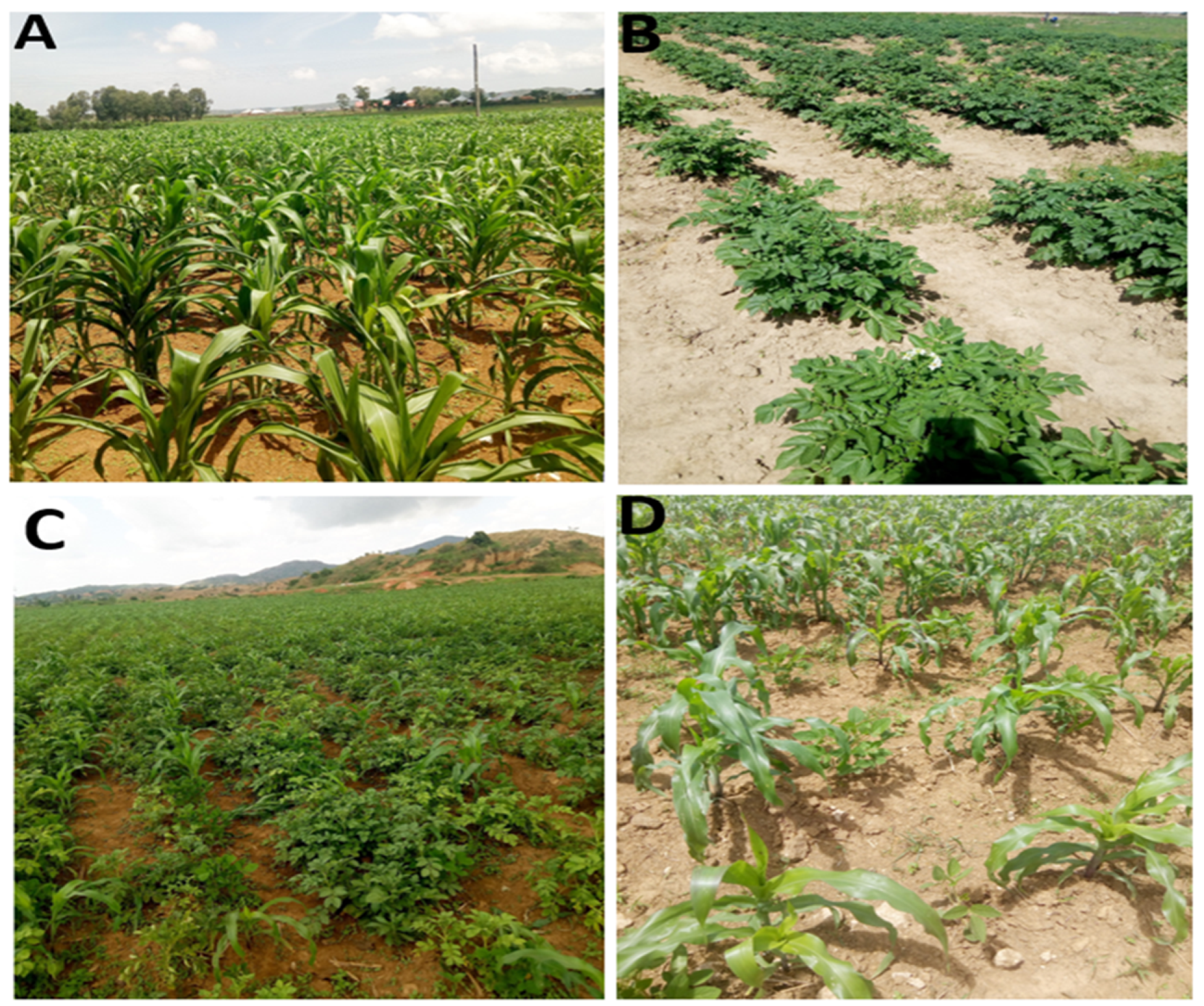- هذا الموضوع فارغ.
- الكاتبالمشاركات
- أبريل 3, 2025 الساعة 2:18 م #620345

Intercropping, the practice of growing two or more crops in the same field during a growing season, is a traditional farming practice that offers numerous benefits to smallholder farmers in Nigeria.
By optimizing the use of available land, labor, and resources, intercropping improves resource utilization, enhances biodiversity, and supports income diversification.
This practice is particularly relevant in Nigerian cropping systems, where smallholder farmers face challenges such as limited land area, soil fertility decline, and unpredictable climate conditions. This article explores various intercropping strategies that can improve farm productivity, ensure food security, and increase income for Nigerian farmers.
1. Understanding the Benefits of Intercropping in Nigerian Farming Systems
Intercropping offers several advantages for Nigerian farmers, particularly in resource-limited settings. By growing multiple crops together, farmers can maximize the use of their land, increasing overall productivity without the need for additional resources.
The benefits of intercropping include improved soil health, better pest and disease management, and efficient use of water and nutrients. For instance, legumes like beans or groundnuts, when intercropped with cereals like maize or sorghum, can fix nitrogen in the soil, enriching its fertility and reducing the need for chemical fertilizers.
Furthermore, intercropping helps prevent soil erosion, as the diversity of crops helps maintain soil structure and minimizes the risk of wind and water erosion. By adopting intercropping systems, farmers can optimize resource use and enhance the resilience of their farming systems to environmental stresses.
2. Enhancing Pest and Disease Management through Intercropping
One of the significant advantages of intercropping is its role in managing pests and diseases. When different crops are grown together, pests that prefer a specific crop are less likely to spread rapidly, reducing the risk of major infestations.
For example, planting crops like maize alongside legumes or vegetables such as pepper or tomato can confuse pests, making it harder for them to find their preferred host. Additionally, intercropping creates a more diverse plant environment, which can attract beneficial insects that prey on harmful pests, further reducing the need for chemical pesticides.
By designing intercropping systems that incorporate plants with pest-repellent properties, farmers can reduce pest pressure naturally, lowering production costs and minimizing environmental impact. Integrated pest management through intercropping promotes ecological balance and reduces reliance on harmful chemicals, benefiting both farmers and the environment.
3. Improving Soil Fertility with Legume-Cereal Intercropping Systems
In Nigerian farming systems, maintaining soil fertility is a crucial challenge, especially with continuous monocropping of nutrient-demanding crops. Intercropping with legumes offers a sustainable solution to this issue.
Legumes, such as groundnuts, beans, and cowpeas, have the ability to fix nitrogen from the atmosphere and convert it into a form that plants can use. When intercropped with cereals like maize, millet, or sorghum, legumes improve soil fertility by replenishing nitrogen levels, which are essential for crop growth.
This nitrogen fixation reduces the need for synthetic fertilizers, which can be costly for smallholder farmers and may have negative environmental impacts if overused.
Furthermore, legumes can also improve the structure of the soil, as their roots help to break up compacted soil and improve water infiltration. This symbiotic relationship between legumes and cereals boosts the productivity of both crops and enhances soil health over time.
4. Diversifying Income through Intercropping Systems
Intercropping is an excellent strategy for income diversification, providing farmers with multiple crops to sell in local markets.
By growing different crops within the same field, farmers can reduce their financial risks by ensuring that they have a variety of products to sell, even if one crop fails due to adverse weather conditions or pest outbreaks.
For example, a farmer who grows both maize and tomatoes can sell the maize at one time of the year and the tomatoes at another, creating a continuous income stream. Additionally, high-value crops like vegetables or fruits, when intercropped with staple crops, can offer significant profit margins.
This diversification helps smallholder farmers to access various markets, meet different consumer demands, and increase their overall household income. In a country like Nigeria, where agricultural income is essential for rural livelihoods, intercropping systems can be a key tool for economic stability and growth.
5. Designing Effective Intercropping Systems for Local Conditions
To maximize the benefits of intercropping, it is essential for Nigerian farmers to design intercropping systems that are suited to their specific local conditions. Factors such as climate, soil type, water availability, and pest pressures should all be taken into account when selecting crops for intercropping.
For example, in areas with limited rainfall, drought-tolerant crops like sorghum or millet can be intercropped with legumes such as cowpeas, which are also drought-resistant, to conserve moisture and improve soil fertility.
In regions prone to pests like aphids or caterpillars, intercropping with crops that repel these pests, such as marigold or basil, can be an effective pest management strategy. By choosing the right combination of crops based on local environmental factors, farmers can create intercropping systems that improve both productivity and sustainability.
Additionally, training farmers on intercropping techniques, including planting density, row spacing, and crop compatibility, is essential for optimizing the outcomes of these systems.
In conclusion, intercropping is a sustainable and highly beneficial farming practice for smallholder farmers in Nigeria. By optimizing resource utilization, improving soil fertility, managing pests and diseases, and diversifying income, intercropping offers multiple advantages that contribute to more resilient and productive farming systems.
Tailoring intercropping systems to local environmental conditions ensures that farmers can maximize the benefits of this practice while reducing dependency on external inputs like chemical fertilizers and pesticides.
With the right knowledge and support, intercropping can be an effective strategy for improving food security, increasing farm profitability, and promoting sustainable agriculture in Nigeria’s diverse cropping systems.
Read Also:Optimizing Crop Rotations for Soil Fertility and Pest Management in Smallholder Farms
- الكاتبالمشاركات
- يجب تسجيل الدخول للرد على هذا الموضوع.

